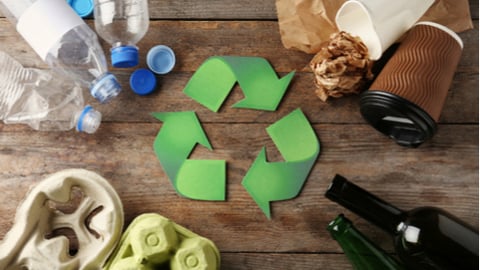Customizable, eco-friendly packaging can help drive c-store ready-to-eat sales
With ready-made meals becoming an ever-more desired product amongst c-store customers, there is a growing awareness amongst their producers of the importance of the packaging they come in.
Future Market Insights in its Ready-to-Eat Food Market Outlook (2023-2033) finds the ready-to-eat market is valued at US$185.8 million and is expected to grow to some $371.6 million by 2033. The popularity of ready-to-eat food products is driven by their convenience to many consumers today and the growing demand for portable and accessible dining choices, with an increasing emphasis on healthy food options.
Earlier this year, Good Natured Products, a producer of plant-based food packaging, in its own report on the ready-to-eat market, found that while a growing number of consumers are taking to ready-made meal options, especially healthy offerings, they are just as concerned about the environment when it comes to their food choices; and more so when it comes to the packaging being used with those ready-to-eat foods. Some 77% say that eco-friendly food packaging is important to them and that they usually look at a product’s packaging when shopping.
Paul Antoniadis, executive chair, and CEO of Good Natured Products says this means companies that wish to tap into the growing ready-to-eat market need to pay attention to the environmental impact of the packaging they are using.
To put it simply, a healthy food choice offering may not be lookup up favourably by a buyer if it comes packaged in traditional plastic packaging. So, makers of such meals now need to keep front-of-mind the packaging they are using, one is eco-friendly, showcases the food in a way that encourages its sale and keeping it fresh.
The company has more than 1,200 customers in the United States and Canada and makes over 100 types of plant-based packaging, following the ASTM D6400 standard to test how well its plant-based materials can compost. good natured Products says it food packaging will break down in a commercial compost facility within 180 days.
Antoniadis says finding that balance of keeping food fresh and having packaging that showcases the food in an appealing way to encourage sales may seem a tough combination to balance. Antoniadis insists, however, that plant-based packaging can provide that balance as well as provide a few other benefits. The first, and one he says is important for many to understand, is making the switch from the traditional petroleum-based packaging that is common today to plant-based packaging is easy and affordable, “so that whole idea that some have that switching to something new means having to give up something or is unworkable or expensive is taken off the table.”
The other is that a company like Good Natured Products does more than simply make off-the-shelf packaging, meaning that a producer of ready-made meals only has a few choices of packaging offering that they can work with.
“We will sit down with you and ask about your business objectives,” Antoniadis says. “We will ask about the shelving space you are working with, how is it that you wish the food to be ‘visualized’, and what customers you are trying to reach. By knowing all that, we can optimize a packaging solution that will best utilize the shelf space and optimize the visual appeal of the food to help drive sales.”
Antoniadis adds that this is critical now as c-store shelving space is at a premium, so companies need to ensure that the right balance is struck between having packaging that shows the food in an appealing manner while at the same time maximizing that limited space. Using pre-made packaging often results in food sitting in a package that can either obscure the food or leaves a lot of ‘air’ about it, which is wasted space.
Antoniadis says that wasted space also means that shelf-space is used less efficiently, as shelf space is taken up by that ‘air’, so fewer products can be shown. And he adds consumer are now judging producers by their packaging choices.
“They wonder why the retailer, or the producer could not find a better package,” he continues. “They think the package is wasteful. And we now see a lot of consumers today judging brands, retail, and food brands, by their packaging. How many times have you gotten a package for something you ordered, and you look at the packaging it arrives in, and you ask what was the company thinking? Did they need to use such a large box for such a small package? It strikes one as wasteful.”
And if a maker of ready-made meals uses a plant-based, eco-friendly packaging they can then tap into that growing consumer preference for packaging that does not add to landfills. Do so will result in increased sales and improve customer loyalty for the product.



